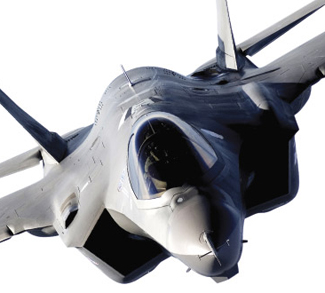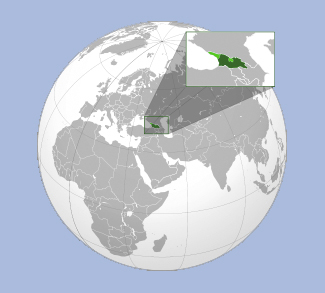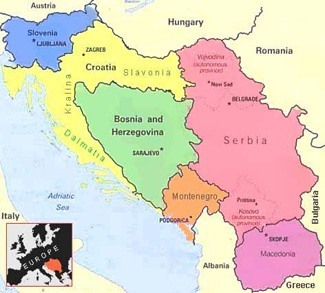Summary
The geopolitical threat environment is evolving, and with it is the way that Canadians approach military spending. A 2024 poll by Angus Reid found that 29% of Canadians view military preparedness and Canada’s global position as a top political priority, up from 12% a decade ago. Moreover, a growing cohort of 53% supports ending Canada’s longstanding membership to the rapidly shrinking club of NATO members that fail to meet their spending pledges under the alliance.
The Trudeau government appears sensitive to these shifts, publishing a new defense policy concept and spending commitment entitled Our North, Strong and Free: A Renewed Vision for Canada’s Defence in April of 2024. In the face of an increasingly hostile global environment, the document says all the right things, highlighting new threats represented by climate change, great power competition, and technological change – all of which demand new thinking and new capacity in Canada’s national defense complex. Its publication was accompanied by pledges from the Trudeau administration to take a ‘major step’ toward reaching the NATO target of 2% of GDP, with the Liberals projecting defense spending levels of 1.76% by the 2029-30 fiscal year.
Yet there are those who remain skeptical that even this modest target can be reached, first and foremost the Parliamentary Budget Officer (PBO), which issued a report contravening the Our North, Strong and Free numbers ahead of a NATO summit in July, depriving the prime minister of even a pretense of compliance during the event. The PBO projections see Canada defense spending languishing at around 1.42% by 2029-30.
This report reviews the major takeaways in Our North, Strong and Free and assesses whether Canada can put itself on track to meeting NATO’s 2% spending target. It wouldn’t be the first time that Ottawa has issued defense spending pledges only to ignore them when the time came to allocate the funds. Will this episode be any different?
Background
Canada in a New Security Context
The policy report identifies global developments that threaten Canada’s security and prosperity; it also singles out Canada’s northern regions as a major concern given the increased accessibility to the area brought about by climate change. Major axes of instability and flux in the global system include:
Climate Change. Climate change is cited as a significant security challenge for Canada, especially with regard to the Arctic – a region that is warming four times faster than the global average. This rapid change is opening the region to foreign actors seeking to exploit its resources and strategic advantages. The Canadian Armed Forces (CAF) are increasingly involved in responding to climate-related emergencies, such as the severe fire season in 2023 that necessitated widespread evacuations and military assistance. This is a trend that is expected to intensify over time, as the Arctic’s accessibility will increase dramatically by 2050, carving out a vital shipping route between Europe and East Asia and attracting heightened interest from Russia and China. Russia for one has already enhanced its military presence in the Arctic, while China aims to become a “polar great power” by 2030, expanding its naval capabilities and infrastructure in the region.
An International Order in Flux. The policy statement notes that the established, post-Cold War international order is under severe strain due to the actions of states like Russia and China, which are challenging established norms and seeking to reshape global relations. Russia’s invasion of Ukraine in particular exemplifies a disregard for sovereignty and international law, posing a direct threat to European security and stability. Canada, as a founding member of NATO, is committed to collective defense, particularly in the Euro-Atlantic region, where it leads multinational forces in Latvia and provides extensive military support to Ukraine.
Strategic Competition. Strategic competition is now a feature in the Euro-Atlantic and Indo-Pacific regions, and the report notes that Canada’s security is intertwined with these theaters owing to geographic position and economic ties. For example, in the Euro-Atlantic, Canada supports NATO’s largest reinforcement effort in order to counter Russia’s aggressive actions in Ukraine. In the Indo-Pacific, Canada is increasing its military presence to protect international laws and norms, especially in the context of China’s expansive ambitions and ongoing military buildup, all of which represents a threat to regional stability.
Global Instability. Global instability is identified as another threat, driven by state fragility, terrorism, and malicious cyber activities. Iran, North Korea, and non-state actors are contributing to regional and global security challenges. Cyberspace and technological advancements create new vulnerabilities, complicating the defense of national interests. The report concludes that Canada must address these threats through capacity development, multilateral efforts, and maintaining technological advantages.
Technological Change and Conflict. Technological advancements like AI, quantum computing, and autonomous systems are transforming warfare and national security. AI enhances cyber capabilities and decision-making, while quantum technology threatens data security. The increasing complexity of cyberspace and the militarization of space require new investments in novel defense platforms. Moreover, hypersonic missiles and low-cost drones pose are altering longstanding tactical certainties on the battlefield, necessitating advancements in air defense and drone countermeasures. Finally, hybrid attacks exploit vulnerabilities in cyber and information domains, challenging traditional military responses.
The Abysmal State of the Canadian Military
The goal for Canadian policymakers is not simply to reach NATO’s 2% benchmark and spare Canada criticism from its NATO allies on the world stage. Rather, it is to reverse the longstanding hollowing out of the CAF, caused by decades of underfunding and cuts. The Canadian military has been asked to ‘do the same with less’ for too long, to the point that its operational capacity is severely compromised.
A brief history of alarm bells rung and ignored:
- 1990 was the last year that Canada spent the equivalent of 2% of GDP on defense. By 2000, this figure had dropped to 1.1%, reflecting years of deep cuts to the Department of National Defence (DND) by Liberal governments.
- The Harper government’s 2006 Canada First defense policy calls the CAF a ‘hollow force,’ lamenting the drop from 89,000 regular force personnel at the end of the Cold War to under 60,000 in the 1990s. (As of 2023, there were approximately 71,500 regular force personnel enrolled in the CAF). The report also notes an ‘overall degradation’ of CAF equipment through the 1990s across all three branches of the military – a trend that continues to this day.
- By 2014, the Harper government had reduced defense spending to 1% of GDP, down from the 1.13% level it inherited in 2006, representing the lowest amount of spending relative to GDP in Canada’s history.
- Staffing cuts through the Chretien and Harper years contributed to a Canadian procurement system that is at best slow and inefficient and at worst wholly unfit for purpose. Incidentally, the difference between the PBO and PMO projections on how close Canada will come to 2% in 2029-30 boil down to the former’s accounting for the delays and lapsed appropriations inherent to Canada’s procurement process.
- A recent internal presentation at the DND found that only 58% of the CAF would be able to respond in the event of a crisis, and almost half of all military equipment is considered ‘unavailable and unserviceable.’
- In 2024, the Royal Canadian Air Force (RCAF) temporarily stopped training pilots in Canada in favor of international training facilities.
- Months later, Defense Minister Bill Blair declares that the CAF is locked into a recruitment ‘death spiral.’ It has since emerged that applications have actually spiked since 2022, though the CAF bureaucracy has failed to translate this interest into higher enrollments.

Carving Out a Path to 2%
The vision of the global system articulated by Our North, Strong and Free is unambiguously expensive so far as Canadian policymakers are concerned, as it envisions new operationality capacities for the CAF. And while it’s a positive that the policy carries an additional $7.9 billion in DND funding through 2024-2028, one must bear in mind that the CAF is still operating at a deficit in terms of staffing and equipment levels. In other words, additional billions would have already been needed for the CAF to meet its obligations under previous defense concepts, let alone those envisioned in Our North, Strong and Free.
To highlight a few points: 1) climate change will require the construction of new logistical infrastructure in the North, along with new icebreakers and planes and vessels that are able to cover large expanses of territory; 2) the global instability and threats to Euro-Atlantic peace have demanded and will continue to demand military assistance from Canada that diverts from domestic modernization and procurement priorities; 3) the policy’s view of strategic competition envisions a ‘blue water’ role for the Royal Canadian Navy as it increases presence to ‘protect international norms’ in far-flung theaters; and 4) the technological change represented by AI and drone warfare is nothing less than a paradigm shift, one that renders old platforms obsolete as it necessitates new and agile procurement strategies.
The policy statement also provides a detailed list of the capabilities and platforms that the Canadian military will pursue in order to adapt to the evolving threat environment. They include:
- Renewing and expanding the submarine fleet (Canada’s four Victoria Class diesel submarines were built in the late 1980s and early 90s).
- Deploying maritime sensors and building new satellite ground stations and operational support hubs in the Arctic.
- Acquiring a modern tactical helicopter capability.
- Acquiring airborne early warning aircraft.
- Acquiring modern surveillance and assault drones.
- Acquiring new ground-based air defenses to protect critical infrastructure.
- Acquiring long-range missile capabilities, including air- and sea-launched platforms.
- Acquiring new vehicles and new offshore patrol vessels able to operate in the Arctic.
- Establishing a Canadian Armed Forces Cyber Command.
- Modernizing Canadian artillery.
- Upgrading or potentially replacing Canada’s tanks and light armored vehicles.
The above represents a hefty shopping list, not overly surprising given the fact that every aspect of the evolving threat environment would have come as a surprise to most defense planners at the turn of the century. Our North, Strong and Free can’t be faulted here: it does a good job of outlining changes to the global order that are playing out in real time, and proposes a three-pronged defense concept to respond: assert Canadian sovereignty (focusing on the Arctic), defend North America (focusing on revamping NORAD), and advance Canada’s global interests and values.
But will Canadian policymakers be up to the task of actualizing these recommendations? This has always been the devil in the details of Canadian defense policy, with prime ministers past and present making a habit of promising more than they can deliver. The political headwinds typically emanate from the same place: Canada’s privileged geopolitical position, buffered on all sides by either ocean or a friendly superpower to the south. Canada is a “fire-proof house, far removed from flammable materials,” in the view of Liberal politician Raoul Dandurand circa 1924. In other words, it does not actively prepare for threats because the threats lurk far beyond the horizon.
It follows that this threat perception must change before Canadian voters will start holding governments to account on the defense spending promises they make. The world described in Our North, Strong and Free moves in that direction; for example, worsening mass migration and natural disasters attributed to climate change and hypothetical Chinese and Russian forays into the North represent encroachments into the fire-proof house’s backyard. So too do the cyber and political threats represented by hostile and authoritarian governments, though these receive less attention in the document. There is growing internal pressure for increased defense spending from Canadian voters, and there is also mounting external pressure from Canada’s allies, especially given the fact that some 20 NATO members have brought themselves into compliance with the 2% target over the past decade. This pressure is compounded by Canada being one of only two members in breach of the second NATO commitment of spending at least 20% of the defense budget on equipment.
The stars appear to be aligned for a sea change in Canadian defense policy, albeit one that will play out slowly, as reflected in both the PMO and PBO spending projections.
A Shift in Canada Defense Spending?
As the above graph shows, Canada has increased defense spending relative to GDP over the past decade – just not enough to bring it into NATO compliance. In absolute terms, Canadian defense spending grew by 67% between 2014-2021. The Our North, Strong and Free platform includes an additional $7.9 billion in funding from 2024-2028. The question thus becomes: Where can the Canadian government find the additional money to reach the 2% target on a realistic timeline?
Like its neighbor to the south, the Canadian government’s interest payments are expected to balloon in the near future. According to government projections, debt servicing will increase from $47.2 billion in 2023-24 to $64.3 billion in 2028-29. By way of comparison, the DND’s entire budget for 2023-24 came in at an estimated $26.5 billion. Debt costs could be higher or lower depending on the direction of interest rates and economic growth, but government spending priorities will be squeezed under all scenarios given the size of the federal debt (speak nothing of growing provincial liabilities). Recall that some of the most savage defense spending cuts came during the deficit- and debt-heavy days of the 1990s. Back then, at the dawn of the post-Cold War era, the DND was viewed as low-hanging fruit politically and as such it absorbed the brunt of cuts. Whether or not that dynamic has changed remains to be seen.
Outlook
Our North, Strong and Free represents a maturation of Ottawa’s strategic thinking, and polling suggests that the Canadian public is a receptive audience. However, the state of federal finances leaves little room for sweeping defense spending increases beyond those outlined in the policy; and if history is any guide, even these increases should not be taken for granted. The best-case scenario for the rejuvenation of the Canadian military and eventually meeting NATO targets would play out something like this:
One, Our North, Strong and Free is actually implemented, helping to fill longstanding gaps in Canada’s military capacity and, since it’s so procurement-heavy, bringing Canada into compliance with NATO’s 20% equipment spending threshold.
Two, long-term political will for defense spending is sustained by a Canadian public whose worldview continues to align with that of the DND. Though it’s clear that the 2% defense spending to GDP target is unlikely to be reached in the next five years, grassroots political support will help insulate the DND from the kind of funding cuts it has been routinely subjected to in the post-Cold War period.
Three, Our North, Strong and Free achieves one of its key stated objectives in building up Canada’s industrial base. In addition to the inherent risks of outsourcing core military production to private interests, the policy statement rightly identifies the pro-job creation and pro-growth aspects of developing Canada’s defense industry. Bolstering Canada’s homegrown capacity for artillery and ammunition production – capacities that are proving a game-changer in the Ukraine war – is cited as one such example. In pursuing these opportunities, Canada can establish positive economic feedback loops that sustain and validate defense spending over the long term.
Though Canada is destined to remain on the wrong side of NATO’s 2% dividing line for the immediate future, there are some signs that the latest Our North, Strong and Free defense policy marks the beginnings of a paradigm shift, one that will continue to play out as Ottawa navigates an increasingly volatile international environment, eventually replacing the political quicksand under the DND with more solid ground.
*This article was originally published on July 12, 2024.




